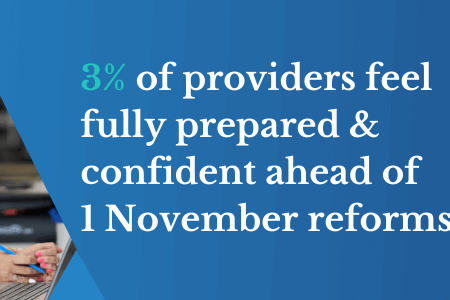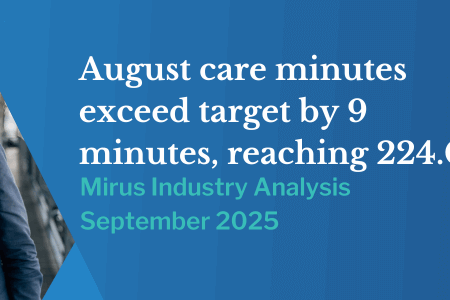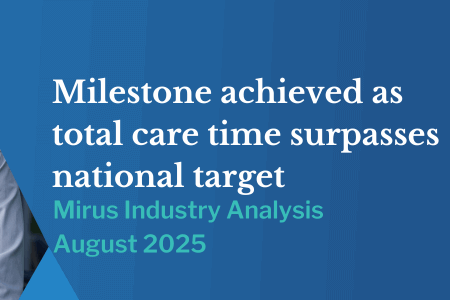What the new staffing rating means for Aged Care Providers
September 24, 2025 | Care Minutes
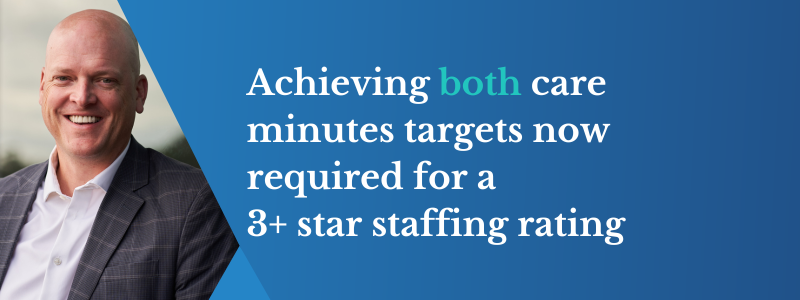
By Tyler Fisher, Data Scientist
From 1 October 2025, the Australian Government will implement a significant change to the way Staffing ratings are calculated within the Star Ratings system for residential aged care providers. This move marks a pivotal shift in how aged care homes are assessed, with a renewed focus on transparency, accountability, and quality of care.
Why the change?
Since the introduction of Star Ratings in 2022, the Staffing rating component has included a tolerance to accommodate workforce shortages. This meant that aged care homes could receive a rating of 3 stars (acceptable) or even 4 stars (good) without meeting both of their mandated care minutes targets. These targets refer to the amount of time staff spend providing care to residents, including both total care minutes and registered nurse care minutes.
However, with substantial efforts made across the sector to address staffing challenges – through recruitment initiatives, training programs, and policy support – the government believes it is time to raise expectations. The redesigned Staffing rating will now require aged care homes to meet both care minutes targets to achieve a rating of 3 stars or higher. This change aligns the rating system with legislated care minute requirements and reflects a broader commitment to improving aged care standards.
What’s changing?
The core of the change lies in how Staffing ratings are calculated. Under the new system, homes must meet two distinct care minute targets:
- Total care minutes – This includes time spent by registered nurses, enrolled nurses, personal care workers, and assistants in nursing.
- Registered nurse care minutes – This must be delivered primarily by registered nurses, though up to 10% of the target can be met by enrolled nurses.
The sector-wide average remains at 215 minutes of care per resident per day, with 44 minutes specifically allocated to registered nurse care. These targets are tailored to each home based on the care needs of their residents.
A new outlines how ratings will be assigned based on performance against these targets. For example, homes that exceed both targets by 110% or more can achieve a 5-star rating, while those falling below 90% on either measure may receive just 1 star.
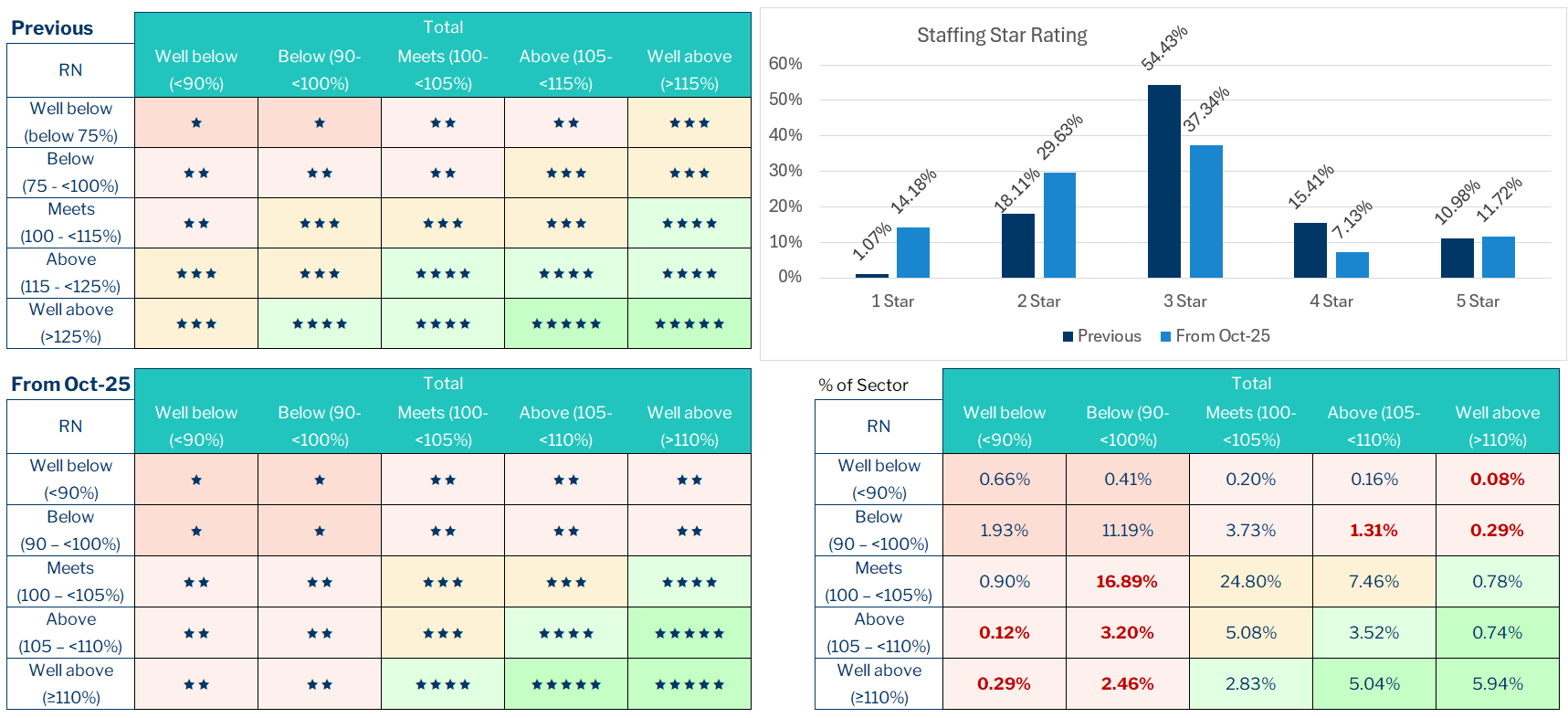
What does this mean for providers?
The good news is that providers won’t need to change their reporting processes. The Star Ratings system itself remains intact, and the redesigned algorithm will be applied automatically. However, the implications are clear: aged care homes must now consistently meet both care minute benchmarks to maintain or improve their Staffing rating.
This shift encourages providers to invest in workforce planning, ensure adequate staffing levels, and prioritize registered nurse availability. It also offers a more accurate reflection of the quality of care being delivered, helping families make informed decisions when choosing a provider.
When will the new ratings be visible?
The updated Staffing ratings will be reflected in the second quarterly Star Ratings update of 2026, published on the My Aged Care website via the “Find a Provider” tool. While the ‘updated Staffing ratings’ will be reflected in the second quarterly update in 2026, the changes will come into effect from 1 October 2025. The second quarterly update in 2026 will reflect the data from the quarter 1 October to 31 December 2025.
A Step Toward Better Care
Ultimately, this change is about raising the standard of aged care in Australia. By removing the tolerance and enforcing both care minute targets, the government is sending a clear message: quality care is non-negotiable. For providers, this is an opportunity to demonstrate their commitment to excellence and ensure that every resident receives the attention and support they deserve.
We’d be happy to discuss how your organisation can align resident claims and roster adjustments to broader strategic goals. Please reach out if you’d like to talk this through further.
